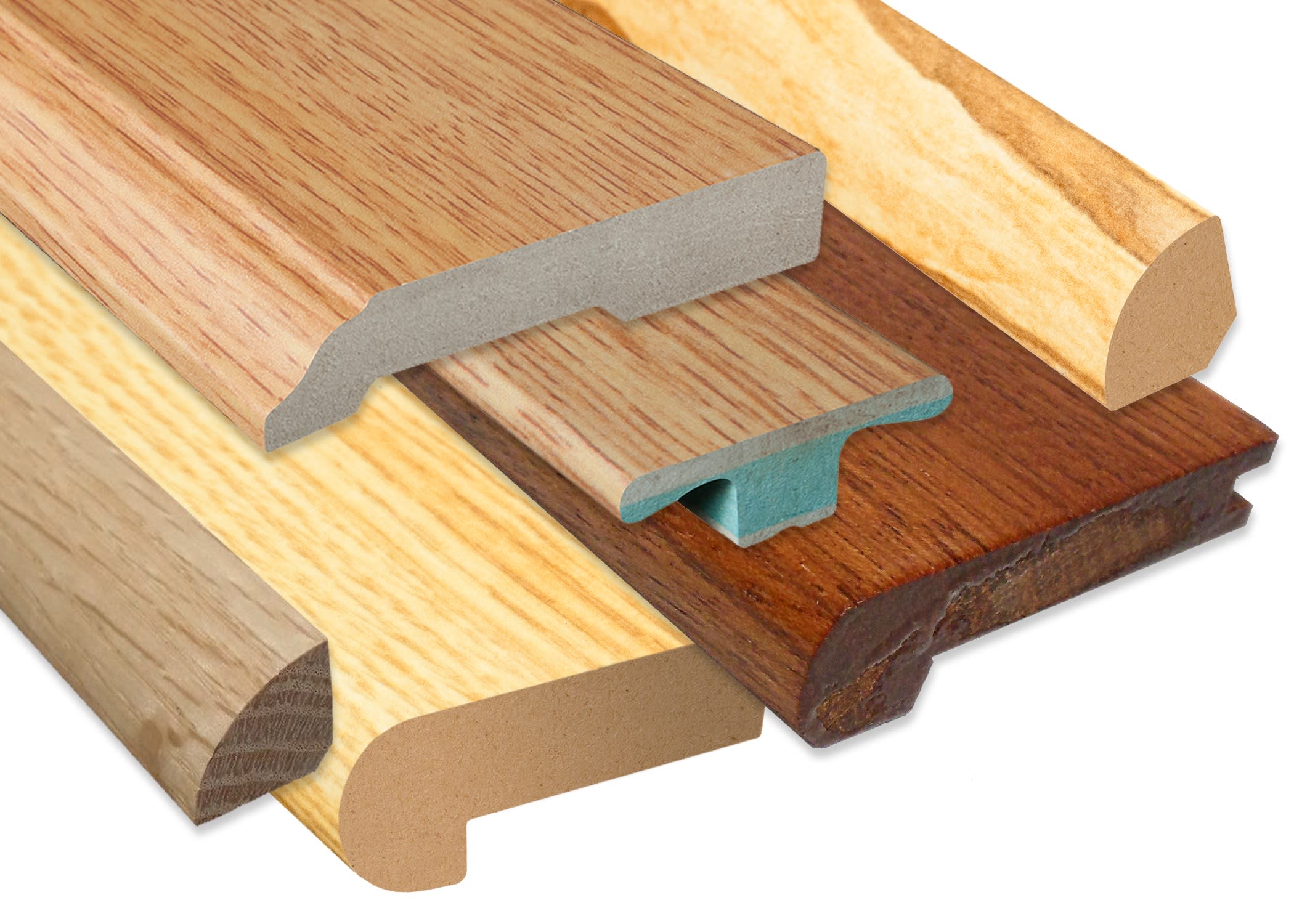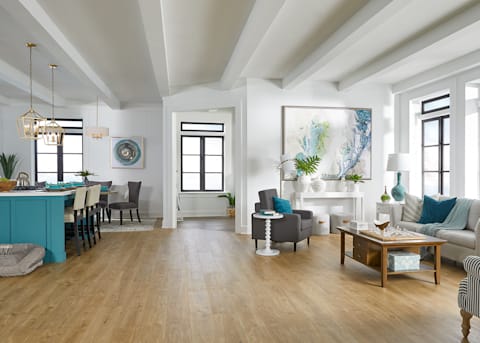- Home
- Education
- Flooring Basics
- Types of Flooring Transitions and Trim
Types of Flooring Transitions and Trim
Baseboards, molding, and other types of trim provide a frame for your room. Their purpose is functional, as they connect your walls and flooring and help protect your walls against knocks and spills. But you can also use them to create a more consistent and defined style in your home.
Transitions and transition strips are needed for all types of flooring, including vinyl plank, laminate, hardwood and engineered hardwood, as well as tile.
Beyond being a necessity, they can be a way to express yourself further. The various shapes and styles add little stylistic notes that can harmonize when given the opportunity. They can bring personality to your space and help complete the room while serving the purpose of preventing any moisture damage to your walls. When looking at baseboards, you should have a clear idea of how you want to express yourself through the room and the size of the space.

Types of Flooring Transitions
Baseboards and other types of molding are like the ribbon around a gift. While they make your space pleasant to look at, the color, shape, and material can have a big effect on the overall impact.
Baseboards are the visual connection between your floor and your walls. They are both functional and stylish, covering any gaps or rough transitions to create a cleaner outline for your room. Using them to define your space can allow each room and style to stand out.
Moldings have a similar purpose to baseboards and can be used in combination with them to close any gaps. Molding and other trim forms connect different types of flooring and make for a smoother transition between surfaces.
Considerations for Baseboards
It's essential to choose baseboards that will mesh well with all of the other elements of your space. A suitable baseboard will complete any room. Baseboards cover the expansion gap between your flooring and walls that allows your floors to expand and contract with temperature or humidity changes. Once installed, baseboards can also prevent any floor spills from reaching and damaging your walls.
You want your baseboard to flow well with your space. Select a style of baseboard that won't overpower your rooms but instead add to them. The chosen material and the height of a baseboard are essential in finding the right type for your space.
To find the proper baseboard for a room, you need to know how high the walls are in order to choose a style that won't be overpowering. Aesthetically, some baseboards are better suited to particular styles than others.
Baseboards with curvier and more ornate edges work better in formal rooms, while tall baseboards with rectangular ridges will better suit a rustic aesthetic. Knowing how you'd like to express yourself through your design will help you choose the perfect baseboards for your home.
Choosing The Right Floor Trim Moldings
Floor trim and moldings have various purposes, such as closing space between flooring types or between your floor and the wall.
T-Molding:
A T-Molding or T-Mold closes the gap between different flooring types. For example, if your living room has a hardwood floor and your kitchen has tile, a T-Molding is designed to fit into the space between the flooring types and connect them. It closes the gap and makes the transition smooth.
Reducer:
If you're trying to create a smoother transition between floors of different heights, a reducer is an excellent option to prevent anyone from stubbing their toes. Reducers create a slope between the floor levels.
Threshold:
Thresholds are ideal for doorway applications and for transitioning between floors of different heights. Used with hardwood flooring, laminate, vinyl, tile, or carpet surfaces.
Quarter-round or shoe molding:
These two types of molding help you close any space between your flooring and your walls and, if you'd like, can be used along with your baseboard. They further fill in any space between your surfaces and deal with the potential expansion in wood-based floors caused by humidity.Drywall is susceptible to water damage and can form bubbles, but molding protects it by creating a barrier between the wall and any spills on the floor. Buying the right floor trim or molding for your flooring is essential.
LL Flooring can color match most trim, molding, and transitions to your flooring, or you can choose the appealing contrast of gleaming primed or painted white trim against your wall and flooring colors to to create your style.
Finish Your Floors with Trim and Other Accessories
All the elements in your room work together to complete your design, and that includes your baseboards and molding. Choose a color or style that will tie in with the different elements of your interior. You might want to coordinate with your vent grills or your stairs to unify the appearance of your home.
Baseboards and floor trim will provide the finishing touch that makes your space feel complete. LL Flooring has a huge variety of baseboards and molding to choose from, and we can also help you find the complementary style for your flooring to make your renovation process a little easier.





